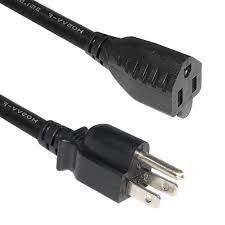For about 50 years now, (U.K. 220v based), I've cut off cables from power tools, leaving a foot or so, and replacing the connector with a 'kettle' plug type (IEC C13 male). On larger equipment, there's room for a permanent male socket to be mounted on the chassis. Reason - don't have several cables trailing everywhere when using a few tools, just the one, which can be transferred from tool to tool, and when I've finished, there's only one long cable to wind away. There's also the safety factor, that I can quickly disconnect a tool if there's a problem (angle grinder, for example).
I now use several 110v hand tools, with even larger plugs on the end of their cables. Is there an alternative (smaller than the yellow) plug/socket that will work the same? Don't think there's a special code for them. The IP rating isn't important as they're for use in the workshop, rather than the obvious intended outside).
I certainly don't want to use the same kettle plug, as there would be a mix-up one day. I already use the kettle plug with a special keyway for those 220v tools which take more current than, say a drill. And use a heavier cable to supply them. So that option is covered (safely) with the present arrangement, which has never given me any problem over 50 years. And also get used on various amplifiers I use as a musician. They're with different mains plugs for different countries, obviating use of adaptors.
EDIT: in response to several comments, I've checked with some lengthy correspondence about changing plugs, and it appears it's permissible, as long as the replacement is proprietary. Splicing on another length of wire isn't. So I guess what I've done is o.k. Maybe the question could have been - is it o.k. to do that? But it's not what I'm looking for, today.

